Search
Search Results

Definition
1st Rhode Island Regiment
The 1st Rhode Island Regiment, also known as Varnum's Regiment or the Black Regiment, was a regiment of the Continental Army during the American Revolutionary War (1775-1783). It was notable for being the first American military unit to consist...
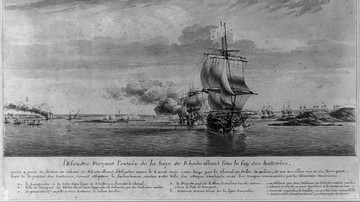
Article
Battle of Rhode Island
The Battle of Rhode Island (29 August 1778), also known as the Siege of Newport or the Battle of Quaker Hill, was fought during the American Revolutionary War (1775-1783). It marked the first attempt at cooperation between the American and...
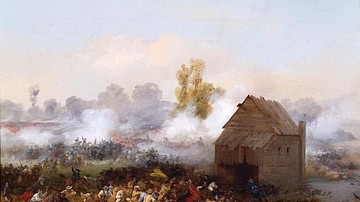
Article
Battle of Long Island
The Battle of Long Island (27 August 1776), or the Battle of Brooklyn, was an important battle of the American Revolutionary War (1775-1783). It resulted in the defeat of the Continental Army and led to the eventual British occupation of...
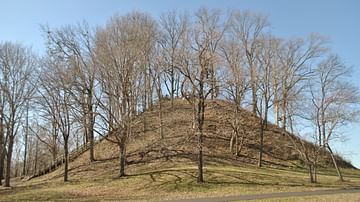
Definition
Pinson Mounds
The Pinson Mounds are a State Archeological Park in Madison County, Tennessee, USA enclosing a prehistoric Native American religious site comprising earthen mounds built during the Middle Woodland Period (c. 200 BCE - 500 CE). Although there...
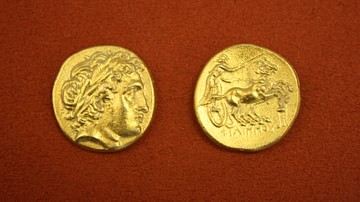
Definition
Numismatics
Numismatics the study of coinage, and is a wonderfully useful tool in the archaeologist's and historian's toolbox. One of the best things for an archaeologist to find while digging is a coin. The reason is simple; it can instantly provide...

Article
New York and New Jersey Campaign
The New York and New Jersey Campaign (3 July 1776 to 3 January 1777) was a pivotal campaign waged during the American Revolutionary War (1775-1783) for control of New York City, the Hudson River, and the resource-rich state of New Jersey...

Definition
Rhodes
Rhodes, with an area of 1,400 km², is the largest island in the Greek Dodecanese group located in the south-eastern Aegean. The island was an important protagonist in wider Greek and Mediterranean affairs throughout the Bronze Age, Archaic...
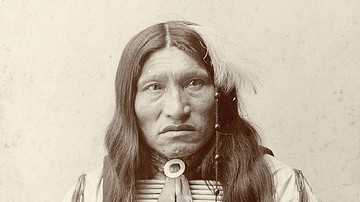
Image
Chief Kicking Bear of the Oglala Lakota Sioux Nation
Chief Kicking Bear (l. 1845-1904) of the Oglala Lakota Sioux Nation in 1891; photo taken while he was a prisoner at Fort Sheridan, Illinois. Kicking Bear is credited by some scholars with creating the ghost shirt used during the Ghost Dance...
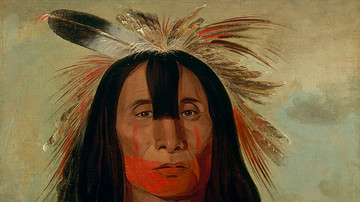
Image
Chief Buffalo Bulls Back Fat of the Kainai Nation
Chief Buffalo Bulls Back Fat (Stu-mick-o-súcks) of the Blood Indians of the Kainai nation of the Blackfoot Confederacy. Oil on canvas by George Catlin, 1832.
Smithsonian American Art Museum, Washington D.C.
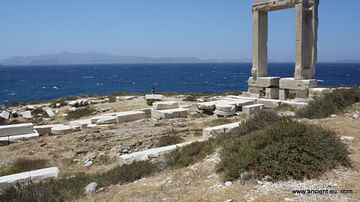
Definition
Naxos
Naxos, with an area of 430 km², is the largest island in the Cyclades archipelago. The island enjoyed its most prosperous periods in the early Bronze Age and again in the Archaic and Classical periods. Naxos in Mythology In certain...